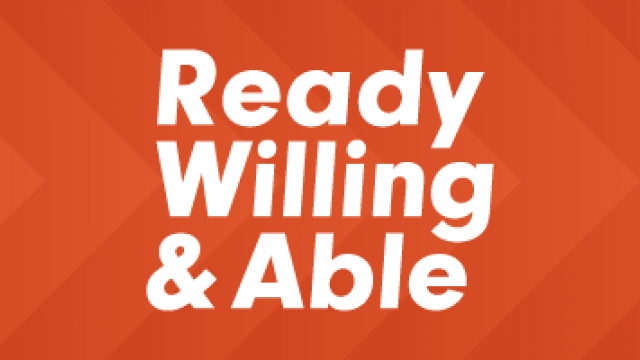
How to write an inclusive job advert
Creating an inclusive job advert can empower both your company and candidates to find the right fit.
Every employer has a workforce made up of unique individuals who all contribute towards your success, but this can only be maximised if you reach a diverse candidate pool at the start of the recruitment process. It is vital that the job description is written with inclusion and accessibility at its core so that you don’t miss out on your perfect candidate.
There are many different ways to write an inclusive job description. Follow the steps below to understand the basics or download our free factsheet for more information.
Make the job title clear
Having a clear job title is key when recruiting. The titles you use can either widen or narrow the audience to whom it may appeal. To ensure candidates can find your job when searching, the title needs to be relevant and self-explanatory.
The right title
A good job title will be formed of three parts: the level, the type of work and the specific area in which the person will work. For example, Supermarket Assistant may not be specific enough. Is this job restricted to a specific area? If so, it should state that, i.e. ‘Supermarket Assistant - Customer Service’. Failure to disclose any specialist areas could cause unnecessary applications, potentially even resulting in a candidate being unaware of what is expected of them. This applies to writing the description too.
The right level
Assistant, team leader, executive, manager, head of and director all reflect different expectations for candidates’ experience and their aspirations – do they match the role you actually need? Remember the market too, Vice President may work in the USA but this may appear confusing to the UK market, suggesting a higher level than it actually is.
Don’t be obscure
Don’t be tempted to use titles that aren’t the norm. For example, Tesla’s Chief Financial Officer changed his title to Master of Coin. Whilst fun and unique, for those looking for work, this creates unnecessary barriers between those who understand and those who do not. For people with learning disabilities and autistic people, this could prevent them from applying.
Be specific with the job description
Keep things simple and remove complex descriptions, minimise abbreviations and technical terms avoiding the need for people to ‘decode’ in order to understand your job descriptions. Jargon, wordiness and awkward phrasing can all confuse job seekers.
Stick to a brief summary of the role and how it fits within the business, who they will be working with or reporting to and the top 2-3 areas of responsibility.
Consider the requirements and skills
Just as with the job description, keep the requirements clear and simple. Limit this to real “must-haves”, ensuring they are directly related to the job role. Avoid the use of generic statements and over inflated expectations - make sure they accurately reflect the job title.
What you want, not who you want
Focus on performance objectives and describe the work, not the ‘ideal’ person, as this can show bias. Highlight what the candidates need to be able to do and achieve whilst in the role and this will encourage more people from diverse backgrounds and skills sets to apply.
Only necessary qualifications
If a specific qualification is required, make sure you are clear about if this is something your candidate needs to hold already or if you are going to provide training to achieve it in the role. Maybe it’s a nice to have rather than a necessity too.
The right words
Think about the words you use. Do they exclude or do they welcome candidates of all backgrounds? Remove and avoid words that could be interpreted as gender, racial, age, disability or any other bias. For example, replace ‘talks to customers’ with ‘communicates with customers’.
Highlight inclusive benefits
Showcase your commitments to being an inclusive and diverse employer, promote any benefits that your business offers that are over and above Government statutory requirements, such as additional parental leave, health care plans and flexible working. Be clear about the additional support available to staff, like mental health advice or tailored disability support.
Find out more
All good employers are inclusive and diverse, but this can only be achieved by being accessible from the start of your employee’s journey with the company. That means ensuring that your job adverts and descriptions are written for everyone.
To find out more about creating an inclusive job description to attract people of all abilities, download our free factsheet.
For more information on taking the next steps to becoming a more inclusive employer, please contact us by emailing RWA@seeability.org.



